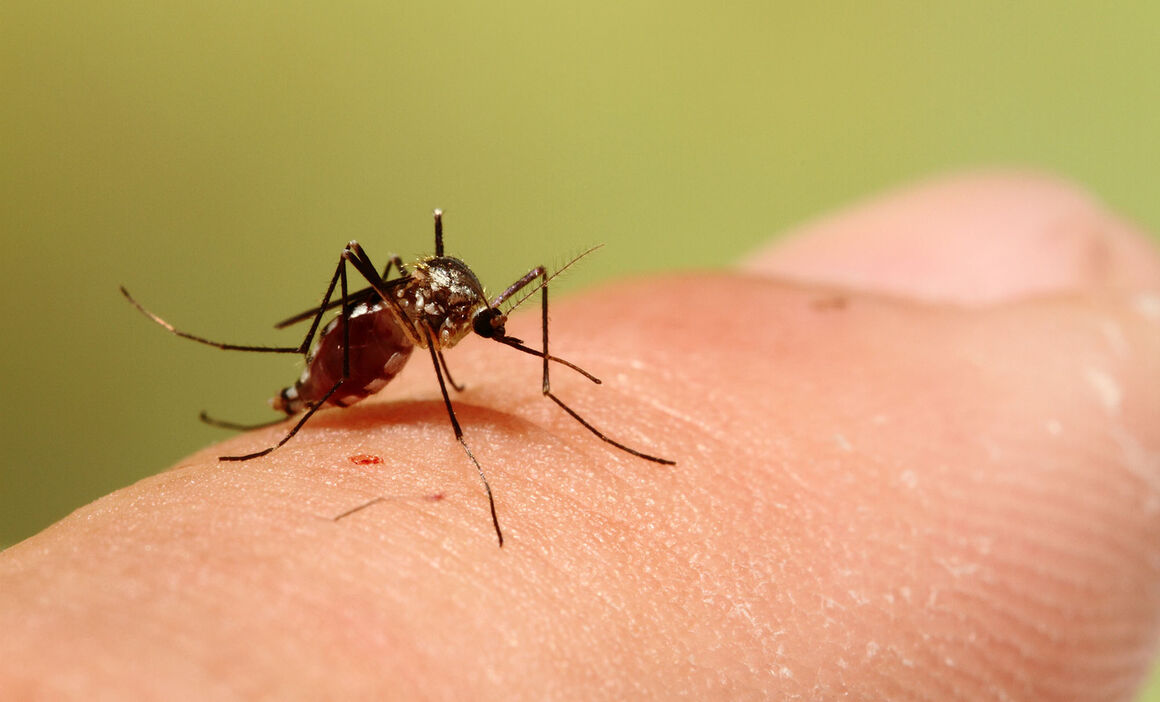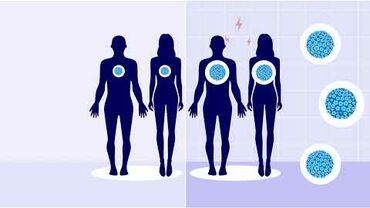Aedes triseriatus - Factsheet for experts

SPECIES NAME/CLASSIFICATION: Aedes triseriatus
COMMON NAMES: American tree-hole mosquito
SYNONYMS AND OTHER NAMES IN USE: Ochlerotatus triseriatus
Hazard associated with mosquito species
Current issues
Invasive species
Aedes triseriatus is a North American invasive mosquito species that is prevalent in the United States. Although it has only been reported in Europe once (France, 2004), its ability to overwinter as diapausing eggs and utilise artificial container habitats as larval development sites indicates that there is a risk that this species will establish in Europe.
Biting and disease risk
Although primarily zoophilic, Aedes triseriatus is known to bite humans [1]. It is the primary vector of La Crosse virus, which has caused serious disease in humans in North America (Borucki et al. 2002) and has been suggested as a possible bridge vector for West Nile virus [2], with field-collected adult mosquitoes testing positive for the virus. It has also been shown to transmit a number of other important human arboviruses under laboratory conditions. Aedes triseriatus’ current role in the transmission of La Crosse virus and its possible involvement in the transmission of other arboviruses, highlights the public health importance of this species.
Geographical distribution
Aedes triseriatus is found in eastern and central North America in hardwood forests [3]. It has been found as far south as Florida Keys, as far west as Texas and as far north as Ontario, Quebec and New Brunswick [4].
Initial importation and spread in Europe
Aedes triseriatus is not yet known to have established itself in Europe but it was intercepted in a batch of used tyres imported from Louisiana (USA) to France in 2004. At the time immediate control measures (insecticide treatment) targeting Aedes albopictus as well were undertaken and achieved the elimination of Aedes triseriatus from the site (S. Chouin & F. Schaffner, unpublished data).
Entomology
- SPECIES NAME/CLASSIFICATION: Aedes triseriatus
- COMMON NAMES: American tree-hole mosquito
- SYNONYMS AND OTHER NAMES IN USE: Ochlerotatus triseriatus [5]
Morphological characters and similar species
Aedes triseriatus is almost indistinguishable from it sibling species Aedes hendersoni (except at fourth larval instar) [6], however the latter has never been found outside its native range. It is easily distinguished from the other invasive and indigenous European species breeding in natural or man-made containers by the absence of pale rings on the legs and the presence of two pale-scaled stripes on the sides of the scutum (dorsal part of the thorax).
Life history (inc. details of overwintering stage)
Aedes triseriatus overwinters through egg diapause [3] in northern areas, with some larvae overwintering in areas where aquatic habitats do not fully freeze [7]. Hatching commonly occurs after tree-hole thawing in early to mid-March [8]. Hatching is suggested to be dependent upon hatch stimuli and may be staggered, resulting in only a proportion of an egg batch hatching in response to a particular stimulus at a certain time. This allows Aedes triseriatus to survive in a variety of environments across its range [7].
Seasonal abundance
The appearance of adults in spring is strongly dependent on temperature and nutrient availability within the larval habitat [9]. Larvae have been found in Ontario, Canada as early as March at mean water temperatures of 6.7°C, with the highest larval density in spring-early summer. Adults are common in July to mid-August [4]. During a study in Virginia oviposition increased in June, peaking in early July and then again in late July [10]. Similar results were reported in a study in West Virginia, with eggs becoming increasingly abundant until July and then remaining at a steady level through to September [11].
Voltinism (generations per season)
Multivoltine [4]
Host preferences (e.g. birds, mammals, humans)
Females tend to prefer mammalian hosts [12], with studies showing preference for deer and squirrels but they are also known to bite humans [13] . Bird biting has been reported [14], as well as feeding on reptiles and amphibians [9]. Analysis of blood meals from specimens collected in Connecticut show meals derived from deer, humans, cats, opossums, rats and birds [15].
Aquatic/terrestrial habitats
Aedes triseriatus breeds in tree-holes, tyres and other artificial containers [3,9] , often in urban areas [3]. Adults are commonly encountered throughout forested areas of eastern and mid-western US [10] and are said to inhabit tree canopies up to 27m high [16]. A study in Florida found more eggs in oviposition traps placed in sylvatic habitats furthest from urbanised developments [16]. This distribution of the species is reported to overlap with that of Aedes japonicus in North America and an overlap in habitat use has also been reported [17].
Biting/resting habits (endo/exophily, endo/exophagy, biting periodicity)
A diurnal species [12], with peaks of activity in the early morning and late afternoon. Adults tend to rest in shaded areas during the day, often near larval habitats, but will fly into open areas to feed [9]. Irby & Apperson [18] found that Aedes triseriatus rested on vegetation in close proximity to larval development sites. A laboratory study showed that La Crosse virus-infected Aedes triseriatus were more likely to take smaller blood meals and re-feed several times within a 24-hour period than uninfected specimens [19].
Environmental thresholds/constraints/development criteria
The effects of habitat and weather parameters on this species are largely unknown [11]. It is known that this species is highly susceptible to larval habitat flooding during heavy rains; Williams et al [4] found that larvae relocate lower down the water column in response. Flight range is reportedly limited to 200 m [12]. However, others suggest that dispersal may be greater than previously suspected, especially in extensive wooded areas [11]. Infection with La Crosse virus has been shown to affect the survival of progeny but not to the extent that it eradicates mosquito populations [3]. A study in Connecticut has found that Aedes triseriatus larval populations have decreased whereas populations of the invasive species Aedes japonicus have increased [20]. This indicates that the species can be outcompeted in some environments. Although Aedes albopictus has also been shown to be superior to Aedes triseriatus in competing for food resources in larval habitats in the US (particularly in artificial container habitats), greater success in overwintering survival and earlier hatching means Aedes triseriatus is able to exploit larval habitats before Aedes albopictus [21].
Epidemiology & transmission of pathogens
Known vector status (In field, experimental transmission)
Aedes triseriatus is a known vector of La Crosse virus, first isolated from a fatal human case in Wisconsin in 1960 and subsequently isolated from field-collected Aedes triseriatus [22-24] . Historically, the majority of La Crosse virus cases have been reported from Wisconsin, Minnesota, Illinois and Ohio, but during the last 20 years, this virus has emerged in West Virginia, Tennessee and North Carolina [21].
It has also been suggested that this mosquito species is a possible bridge vector for following isolations of the virus from field collections [2] . Chipmunks are suggested as a possible source of West Nile virus for zoophilic or opportunistic mosquitoes [14], hence the interest in this mosquito with regard to West Nile virus transmission cycles. A recent study detected West Nile virus in field-collected male Aedes triseriatus in Louisiana, USA, representing the first evidence of vertical transmission of West Nile virus in Aedes triseriatus. However, the role of this species in the maintenance of West Nile virus in nature needs further investigation [25].
Aedes triseriatus is also considered to be a competent vector of West Nile virus experimentally [26] and of Venezuelan equine encephalitis [27], Eastern equine encephalitis, Western equine encephalitis, Dengue (type I), St Louis encephalitis virus and Yellow Fever virus under laboratory conditions [1].
La Crosse virus
Role as enzootic or bridge vector
Transmission cycles of La Crosse virus are maintained in northern and central America through Aedes triseriatus and chipmunks, grey squirrels, foxes and possible other small, forest dwelling mammals [21,24] . Aedes triseriatus can become infected and transmit La Crosse virus under laboratory conditions [22]. La Crosse virus has been repeatedly isolated from field-collected adults [23] and larvae [22,24] , indicating virus survival over the winter is due to transovarial transmission. Transovarial transmission and vector competency were demonstrated in 1973 when the virus was detected in F1 eggs, larvae and adults which were able to transmit the virus to mice and chipmunks under laboratory conditions [28]. Although it has previously been suggested that Aedes triseriatus mosquitoes are unable to maintain La Crosse virus in nature via transovarial transmission, a recent study has shown that some field-collected females can become stably-infected (‘super-infected’), enabling them to transmit the virus to a high percentage of their progeny [29].
Clinical features
La Crosse virus can cause serious disease in humans and is the most common cause of paediatric arboviral encephalitis in the US with 42‒172 cases reported annually [3]. The majority of human cases in America occur between July and September, when mosquito abundance peaks. Prior to West Nile virus, La Crosse virus was considered one of the most important mosquito-borne diseases in the US [13]. Most human infections occur between July-September [3].
Potential/confirmed disease risk
Aedes triseriatus have been found positive for the virus in areas where human cases have been reported [10,11] and seropositive chipmunks have been collected in areas where Aedes triseriatus larvae have been found to be La Crosse virus positive [22].
Factors driving/impacting on transmission cycles
Risk factors in North America include; outdoor activities, rural residence and proximity of dwellings to aquatic habitats of the mosquito [3]. Human and vector contact is said to have increased due to humans living in forested areas and Aedes triseriatus using artificial containers as breeding sites [10]. The encroachment of human dwellings into forested areas may have resulted in the emergence of La Crosse virus in the Appalachian region [21].
Jacksonet al. [19]showed that La Crosse virus infected Aedes triseriatus took smaller blood meals and re-fed more often than uninfected mosquitoes. This may contribute to enhanced horizontal transmission of La Crosse virus due to increased frequency of host contact within a gonotrophic cycle.
Public health (control/interventions)
Surveillance
No specific surveillance has been implemented in Europe so far but nationwide surveillance of invasive species and their introduction pathways in France led to the species being intercepted when it was introduced with used tyres originating from Louisiana (USA) (S. Chouin & F. Schaffner, unpublished data).
Appropriate sampling strategy (aquatic larval sampling, adult traps)
Sampling strategies include; CO2-baited CDC light traps [30,31] , gravid traps [32], ovitraps and flashlight type aspirators [10]. Problems have been reported when trying to collect Aedes triseriatus - adults are reluctant to enter light or baited traps, human landing catches can expose humans to La Crosse virus, trap colour, substrate texture, density of water, position of opening and presence of decay products can affect the success of a trap [9]. Obenauer et al. [16] used dark coloured, suspended oviposition traps that mimic tree holes and suggested that the success of these traps was due to Aedes triseriatus’ preference for dark oviposition sites.
Species-specific control methods e.g. insecticide, public health education etc.
Much of the guidance for other container-breeding species, such as Aedes albopictus which focuses on source reduction and insecticide use, would be equally applicable to Aedes triseriatus in a synanthropic setting. Personal protective measures to reduce the risk of mosquito bites include the use of mosquito bed nets (preferably insecticide-treated nets), sleeping or resting in screened or air-conditioned rooms, the wearing of clothes that cover most of the body, and the use of mosquito repellent in accordance with the instructions indicated on the product label.
Current nuisance biting/vector issues in Europe
None.
Existing public health awareness and education materials
The CDC website provides a curriculum guide for teachers and provides them with information to educate children about the risks and prevention of La Crosse virus. This can be found at: http://www.cdc.gov/ncidod/dvbid/arbor/neato.htm
They also provide information on La Crosse virus. This can be found at:http://www.cdc.gov/lac/.
The National Travel Health Network and Centre provides information on how to avoid insect bites (including mosquito bites). This can be found at: http://www.nathnac.org/pro/factsheets/iba.htm.
Key areas of uncertainty
- Further information is required on the presence and the distribution of this species in Europe and the potential role of this mosquito in transmitting pathogens.
- Further study is needed to establish the effects of habitat and weather parameters on Aedes triseriatus populations and to assess the dynamics of amplifier and non-amplifier hosts of La Crosse virus [11].
References
1. Freier JE, Grimstad PR. Transmission of dengue virus by orally infected Aedes triseriatus. Am J Trop Med Hyg. 1983 Nov;32(6):1429-34.
2. CDC. Mosquito species producing WNV positives by year (avail online – access 16/6/2010) 2009. Available from: http://www.cdc.gov/ncidod/dvbid/westnile/mosquitospecies.htm
3. Borucki MK, Kempf BJ, Blitvich BJ, Blair CD, Beaty BJ. La Crosse virus: replication in vertebrate and invertebrate hosts. Microbes Infect. 2002 Mar;4(3):341-50.
4. Williams DD, MacKay SE, Verdonschot RC, Tacchino PJ. Natural and manipulated populations of the treehole mosquito, Ochlerotatus triseriatus, at its northernmost range limit in southern Ontario, Canada. J Vector Ecol. 2007 Dec;32(2):328-35.
5. Reinert JF. New classification for the composite genus Aedes (Diptera: Culicidae: Aedini), elevation of subgenus Ochlerotatus to generic rank, reclassification of the other subgenera, and notes on certain subgenera and species. J Am Mosq Control Assoc. 2000 Sep;16(3):175-88.
6. Reno HE, Vodkin MH, Novak RJ. Differentiation of Aedes triseriatus (Say) from Aedes hendersoni Cockerell (Diptera: Culicidae) by restriction fragment length polymorphisms of amplified ribosomal DNA. Am J Trop Med Hyg. 2000 Feb;62(2):193-9.
7. Khatchikian CE, Dennehy JJ, Vitek CJ, Livdahl T. Climate and geographic trends in hatch delay of the treehole mosquito, Aedes triseriatus Say (Diptera: Culicidae). J Vector Ecol. 2009 Jun;34(1):119-28.
8. Shroyer DA, Craig GB, Jr. Egg diapause in Aedes triseriatus (Diptera: Culicidae): geographic variation in photoperiodic response and factors influencing diapause termination. J Med Entomol. 1983 Nov 30;20(6):601-7.
9. Moore CG, McLean RG, Mitchell CJ, Nasci TF, Calisher CH, Marfin AA, et al. Guidelines fro arbovirus surveillance programs in the United States. Fort Collins, Colorado: Division of Vector-Borne Infectious Diseases, National Center for Infectious Diseases, Centers for Disease Control and Prevention, 1993.
10. Barker CM, Paulson SL, Cantrell S, Davis BS. Habitat preferences and phenology of Ochlerotatus triseriatus and Aedes albopictus (Diptera: Culicidae) in southwestern Virginia. J Med Entomol. 2003 Jul;40(4):403-10.
11. Nasci RS, Moore CG, Biggerstaff BJ, Panella NA, Liu HQ, Karabatsos N, et al. La Crosse encephalitis virus habitat associations in Nicholas County, West Virginia. J Med Entomol. 2000 Jul;37(4):559-70.
12. Turell MJ, Dohm DJ, Sardelis MR, Oguinn ML, Andreadis TG, Blow JA. An update on the potential of north American mosquitoes (Diptera: Culicidae) to transmit West Nile Virus. J Med Entomol. 2005 Jan;42(1):57-62.
13. Freier JE, Beier JC. Oral and transovarial transmission of La Crosse virus by Aedes atropalpus. Am J Trop Med Hyg. 1984 Jul;33(4):708-14.
14. Platt KB, Tucker BJ, Halbur PG, Tiawsirisup S, Blitvich BJ, Fabiosa FG, et al. West Nile virus viremia in eastern chipmunks (Tamias striatus) sufficient for infecting different mosquitoes. Emerg Infect Dis. 2007 Jun;13(6):831-7.
15. Molaei G, Andreadis TG, Armstrong PM, Diuk-Wasser M. Host-feeding patterns of potential mosquito vectors in Connecticut, U.S.A.: molecular analysis of bloodmeals from 23 species of Aedes, Anopheles, Culex, Coquillettidia, Psorophora, and Uranotaenia. J Med Entomol. 2008 Nov;45(6):1143-51.
16. Obenauer PJ, Kaufman PE, Allan SA, Kline DL. Infusion-baited ovitraps to survey ovipositional height preferences of container-inhabiting mosquitoes in two Florida habitats. J Med Entomol. 2009 Nov;46(6):1507-13.
17. Alto BW. Interspecific larval competition between invasive Aedes japonicus and native Aedes triseriatus (Diptera: Culicidae) and adult longevity. J Med Entomol. 2011 Mar;48(2):232-42.
18. Irby WS, Apperson CS. Spatial and temporal distribution of resting female mosquitoes (Diptera: Culicidae) in the coastal plain of North Carolina. J Med Entomol. 1992 Mar;29(2):150-9.
19. Jackson BT, Brewster CC, Paulson SL. La Crosse virus infection alters blood feeding behavior in Aedes triseriatus and Aedes albopictus (Diptera: Culicidae). J Med Entomol. 2012 Nov;49(6):1424-9.
20. Andreadis TG, Wolfe RJ. Evidence for reduction of native mosquitoes with increased expansion of invasive Ochlerotatus japonicus japonicus (Diptera: Culicidae) in the northeastern United States. J Med Entomol. 2010 Jan;47(1):43-52.
21. Leisnham PT, Juliano SA. Impacts of climate, land use, and biological invasion on the ecology of immature Aedes mosquitoes: implications for La Crosse emergence. EcoHealth. 2012 Jun;9(2):217-28.
22. Pantuwatana S, Thompson WH, Watts DM, Hanson RP. Experimental infection of chipmunks and squirrels with La Crosse and Trivittatus viruses and biological transmission of La Crosse virus by Aedes triseriatus. Am J Trop Med Hyg. 1972 Jul;21(4):476-81.
23. Thompson WH, Anslow RO, Hanson RP, Defoliart GR. La Crosse virus isolations from mosquitoes in Wisconsin, 1964-68. Am J Trop Med Hyg. 1972 Jan;21(2):90-6.
24. Watts DM, Thompson WH, Yuill TM, DeFoliart GR, Hanson RP. Overwintering of La Crosse virus in Aedes triseriatus. Am J Trop Med Hyg. 1974 Jul;23(4):694-700.
25. Unlu I, Mackay AJ, Roy A, Yates MM, Foil LD. Evidence of vertical transmission of West Nile virus in field-collected mosquitoes. J Vector Ecol. 2010 Jun;35(1):95-9.
26. Styer LM, Kent KA, Albright RG, Bennett CJ, Kramer LD, Bernard KA. Mosquitoes inoculate high doses of West Nile virus as they probe and feed on live hosts. PLoS Pathog. 2007 Sep 14;3(9):1262-70.
27. Davis MH, Hogge AL, Jr., Ferrell JF, Corristan EC. Mosquito transmission of Venezuelan equine encephalomyelitis virus from experimentally infected frogs. Am J Trop Med Hyg. 1966 Mar;15(2):227-30.
28. Watts DM, Pantuwatana S, DeFoliart GR, Yuill TM, Thompson WH. Transovarial transmission of LaCrosse virus (California encephalitis group) in the mosquito, Aedes triseriatus. Science. 1973 Dec 14;182(4117):1140-1.
29. Reese SM, Mossel EC, Beaty MK, Beck ET, Geske D, Blair CD, et al. Identification of super-infected Aedes triseriatus mosquitoes collected as eggs from the field and partial characterization of the infecting La Crosse viruses. Virol J. 2010;7:76.
30. Andreadis TG, Anderson JF, Armstrong PM, Main AJ. Isolations of Jamestown Canyon virus (Bunyaviridae: Orthobunyavirus) from field-collected mosquitoes (Diptera: Culicidae) in Connecticut, USA: a ten-year analysis, 1997-2006. Vector Borne Zoonotic Dis. 2008 Apr;8(2):175-88.
31. Falco RC, Daniels TJ, Slameck MC. Prevalence and distribution of Ochlerotatus japonicus (Diptera: Culicidae) in two counties in southern New York State. J Med Entomol. 2002 Nov;39(6):920-5.
32. Dunphy BM, Tucker BJ, Petersen MJ, Blitvich BJ, Bartholomay LC. Arrival and establishment of Aedes japonicus japonicus (Diptera: Culicidae) in Iowa. J Med Entomol. 2009 Nov;46(6):1282-9.



